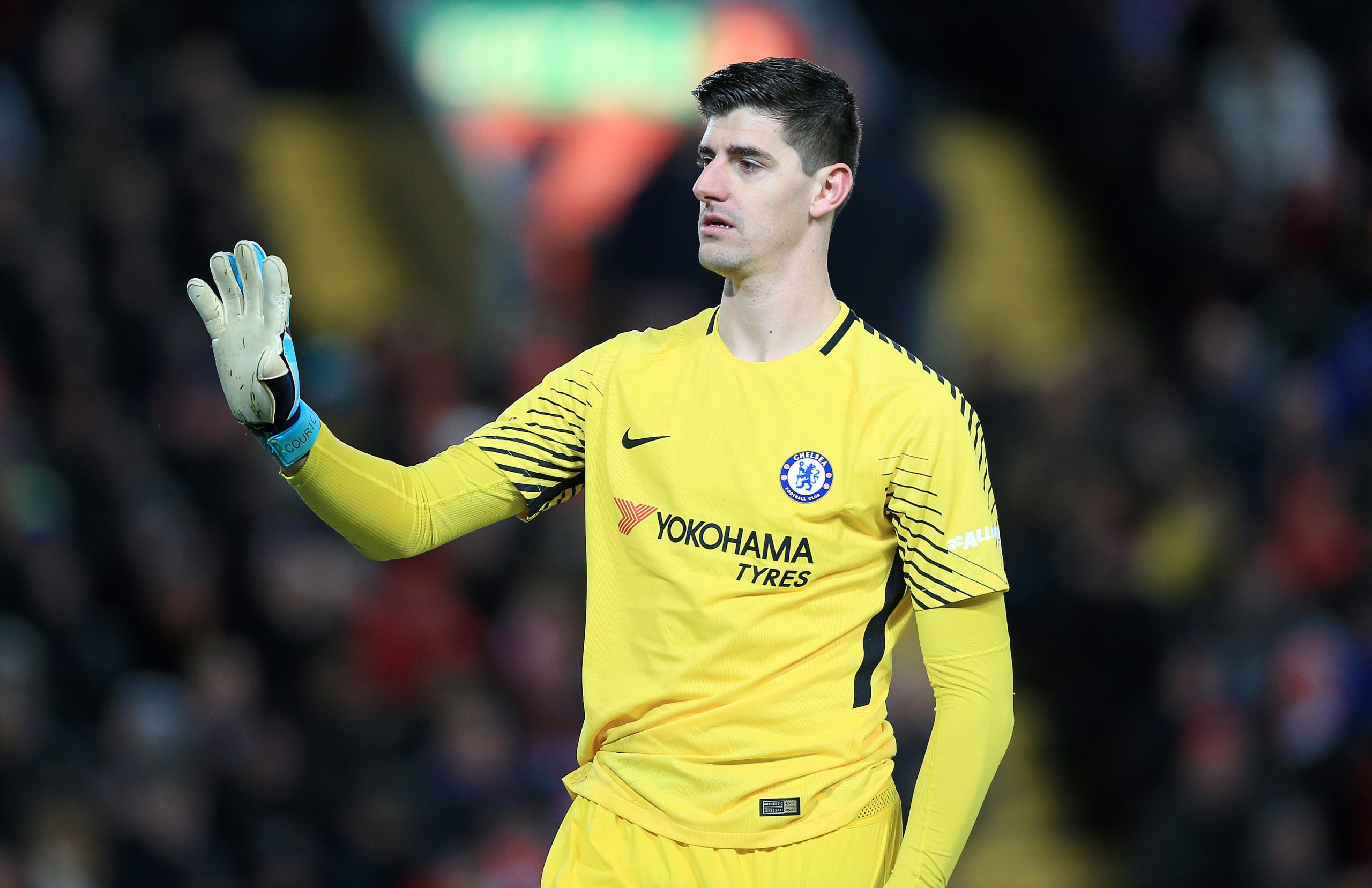At 19 years old, Thibaut Courtois was Diego Simeone’s first choice keeper at Atletico Madrid. After three full seasons in La Liga he was being touted as the best young goalkeeper in the world. Four seasons on, people were more likely to tout David De Gea, the man Courtois replaced at Atletico, as the best keeper in the world. Then, at the World Cup, over the span of a few games, De Gea has a nightmare, Courtois did well, won the Golden Glove, and suddenly he, and not De Gea, who’s on his way to Real Madrid. Welcome to the football merry-go-round.
In the last two seasons at Chelsea, Courtois has conceded one more goal in the Premier League than models expect for the shots on target he’s faced. In Russia, his shot-stopping was worth one full goal during his seven games and he had the most work to do out of all the keepers out there (Here’s lookin’ at you, Bobby Martinez!). In the middle of it all he even managed to get into a mini spat with tiny, little, Jordan Pickford.
Given time to pluck the ball out of the air from a long looping cross, there’s barely anyone better than gigantor, Courtois. He dominates aerially. He faced just three shots on target from the centre of his six yard box. He saved two of them. Pickford faced 11 and saved one. Pickford does not dominate his six yard box. He doesn’t dominate aerially. Size is important. Thibaut was right! Pickford responded to the comments by bigging up his own power and agility and not caring if he was the biggest. Power and agility is important. Jordan was right, too!
Last season Courtois had a real problem in dealing with shots coming from central positions in the area around the penalty spot. Pickford didn’t. Whisper it quietly, but it’s almost like keepers have different make ups and different strengths and weaknesses. Because of his size, Courtois doesn’t often need to power from his set position into full length dives. He doesn’t do it often, and when Courtois does need to get power from his set position, he frequently fails to do so. Because of his size, Courtois is far too in the habit of just collapsing down in order to get to the deck quicker. He has to do this because he takes up fairly aggressive positions which restrict his reaction time. Courtois’ size also goes against him when situations develop quickly. He reacts once the thing has happened. He keeps by numbers, and is reactive rather than proactive. He decides to close out shooters when the ball is already at their feet rather than anticipating the play early. He is s-l-o-w.
Nit-picking? Maybe. But these are the small differences that make or break a goalkeeper’s season.
Courtois’ save % from this area was 50% and way below average. Pickford’s was 64%. And those shots from wide areas in the penalty box like Adnan Januzaj’s goal against this summer Pickford? Last season Pickford saved 19 out of 22 of those. Courtois saved 10 out of 17. But, given time to react from longer range shots outside the area centrally, Courtois swallowed them whole. Pickford struggled. These patterns were exactly the same for season 2016/17, even with Pickford plying his trade at a different club with a different set-up.
Football’s analysis is often confined by week to week constraints. There’s always a game around the corner during the season that needs to be prepared for. But, if you don’t break down a keepers’ numbers it’s difficult to break down their game. You could watch every game in real time and not note these patterns. The record of what actually happens, the information in the long term data highlights the problem. Long term success needs long term analysis and planning. Football has more flashes in the pan than a wok chef with pyromania. The need to ignore short term narratives is huge.
Courtois’ weaknesses also highlights another keeper coaching bugbear of mine. Look at all the publicly available coaching videos. There’s more repetition in the drills than a Jive Bunny track. The keepers know what’s coming. Footwork steps, dive, get up, speed back to start position, footwork steps dive, get up, speed back to start position. Yes, developing some muscle memory is important, but how are you teaching visual clues as to what’s going to happen during the actual match if it doesn’t match your rigid training exercise? Saving a shot involves footwork, it involves diving technique, agility, power, handling. But, first of all, it involves making dynamic decisions about how to handle each situation as it develops. Coaches are taking this away in their sessions.
Every recorded shot on target in a model has all this information built in by virtue of it simply happening in thousands and thousands of top level matches over many years. Long term data tells you what’s working and what’s not. Use it. Or don’t.
At window’s close, with Courtois off to Madrid, Chelsea spend a whopping £72 million to replace him with Kepa Arrizabalaga. Pickford, who was briefly rumored to be on Chelsea’s list to replace Courtois stayed at Everton for at least another season. Kepa is, as yet, unproven in the Premier League, but to prove himself better than Pickford he’ll have to clear a very competent bar. In the last two seasons, Pickford has saved three more goals in the Premier League than models expect for the shots on target he’s faced. Meanwhile, De Gea, sitting pretty above this summer’s transfer fray, he’s saved about five or six times that.
